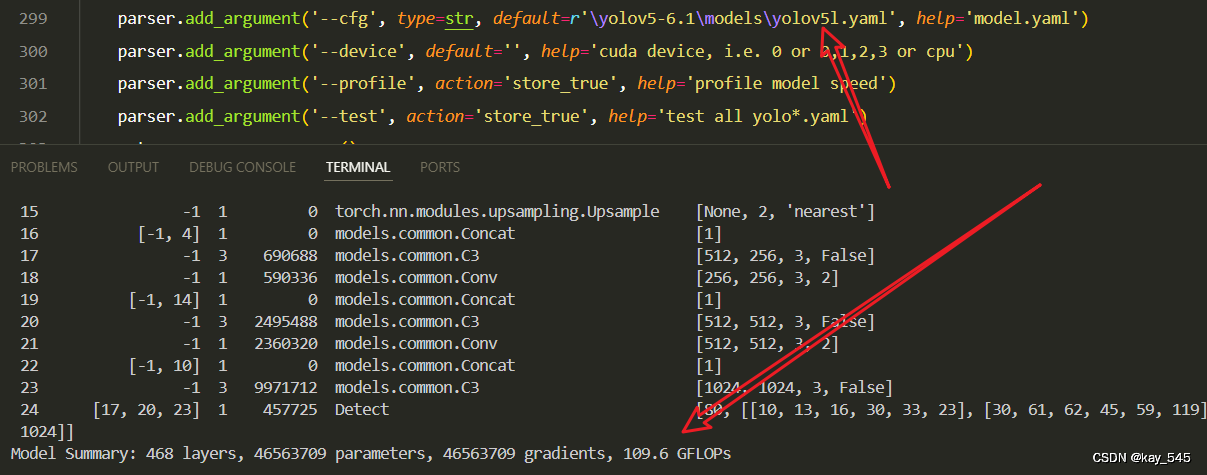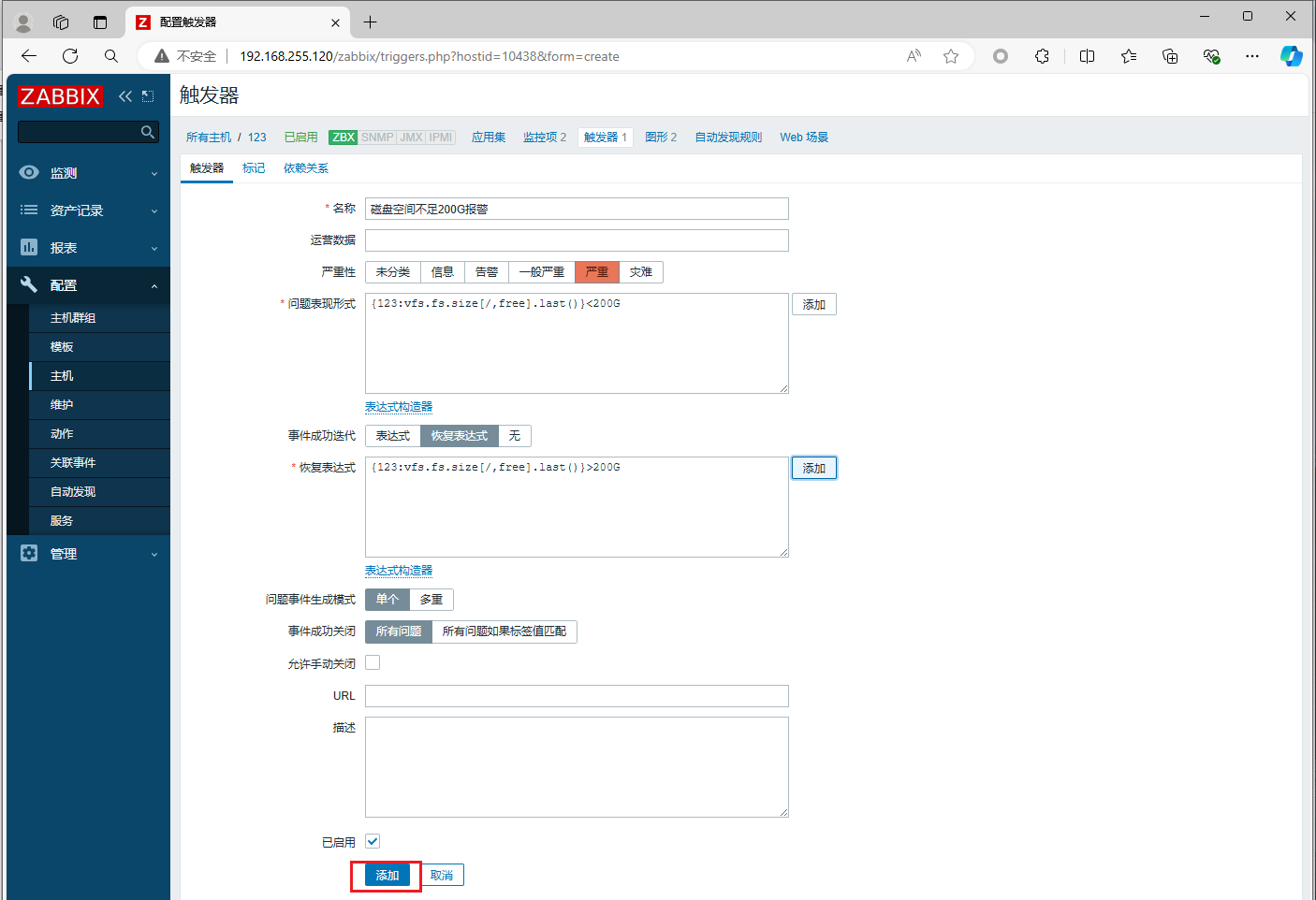秋招面试专栏推荐 :深度学习算法工程师面试问题总结【百面算法工程师】——点击即可跳转
💡💡💡本专栏所有程序均经过测试,可成功执行💡💡💡
专栏目录: 《YOLOv5入门 + 改进涨点》专栏介绍 & 专栏目录 |目前已有70+篇内容,内含各种Head检测头、损失函数Loss、Backbone、Neck、NMS等创新点改进
本文介绍了一种名为CGNet的轻量级语义分割网络,专为移动设备设计。CGNet通过上下文引导模块有效融合局部和全局上下文信息,提高了分割精度,同时大幅减少了参数数量。文章在介绍主要的原理后,将手把手教学如何进行模块的代码添加和修改,并将修改后的完整代码放在文章的最后,方便大家一键运行,小白也可轻松上手实践。以帮助您更好地学习深度学习目标检测YOLO系列的挑战。
专栏地址: YOLOv5改进+入门——持续更新各种有效涨点方法 点击即可跳转
目录
1.原理
2. 将C3_ContextGuided 添加到yolov5网络中
2.1 C3_ContextGuided 代码实现
2.2 新增yaml文件
2.3 注册模块
2.4 执行程序
3. 完整代码分享
4. GFLOPs
5. 进阶
6. 总结
1.原理

论文地址:CGNet: A Light-weight Context Guided Network for Semantic Segmentation——点击即可跳转
官方代码:官方代码仓库——点击即可跳转
ContextGuided网络(CGNet)的主要原理是通过一种称为Context Guided(CG)块的模块来高效地捕捉图像中的上下文信息,从而提高语义分割的精度。以下是CGNet的核心思想和原理:
1. 上下文信息的重要性
语义分割不仅需要识别单个像素的类别,还需要考虑像素之间的空间关系和上下文信息。传统的图像分类网络主要关注局部特征,而忽略了语义分割中更重要的上下文信息。CGNet的设计正是为了解决这一问题。
2. Context Guided(CG)块
CG块是CGNet的基础单元,其核心思想是结合局部特征、周围上下文信息和全局上下文信息来进行特征学习。
-
局部特征提取器:提取像素点的局部特征,关注像素周围的局部区域。
-
周围上下文提取器:提取像素点周围的上下文信息,帮助更好地理解当前像素的类别。
-
全局上下文提取器:使用全局的上下文信息对联合特征进行加权,从而增强有用的信息,抑制无用的信息。
通过结合这三种信息,CG块能够更好地捕捉图像中的语义和空间关系,使得在整个网络的各个阶段都能够有效地整合上下文信息。
3. 网络结构设计
CGNet在设计上遵循“深而窄”的原则,采用了轻量化的结构,以减少参数数量和内存占用。与传统的语义分割网络相比,CGNet具有以下特点:
-
减少下采样阶段:CGNet仅有三个下采样阶段,这有助于保留更多的空间信息,避免过度平滑的分割边界。
-
深层和浅层结合:CGNet在网络的所有阶段捕捉上下文信息,从浅层捕获空间信息,从深层捕获语义信息,从而提高分割精度。
4. 轻量化设计
CGNet使用了通道分组卷积等技术来进一步减少计算量,降低模型的复杂度,从而使其适合在移动设备上运行。尽管参数量较少,CGNet仍然能够在语义分割任务中提供较高的精度。
5. 实验验证
CGNet在多个数据集(如Cityscapes和CamVid)上的实验结果表明,在相同参数数量下,CGNet显著优于现有的轻量化语义分割网络。
总的来说,CGNet通过巧妙的上下文信息提取机制和轻量化设计,成功在移动设备上实现了高效且精确的语义分割。
2. 将C3_ContextGuided 添加到yolov5网络中
2.1 C3_ContextGuided 代码实现
关键步骤一: 将下面的代码粘贴到\yolov5\models\common.py中
class FGlo(nn.Module):"""the FGlo class is employed to refine the joint feature of both local feature and surrounding context."""def __init__(self, channel, reduction=16):super(FGlo, self).__init__()self.avg_pool = nn.AdaptiveAvgPool2d(1)self.fc = nn.Sequential(nn.Linear(channel, channel // reduction),nn.ReLU(inplace=True),nn.Linear(channel // reduction, channel),nn.Sigmoid())def forward(self, x):b, c, _, _ = x.size()y = self.avg_pool(x).view(b, c)y = self.fc(y).view(b, c, 1, 1)return x * yclass ContextGuidedBlock(nn.Module):def __init__(self, nIn, nOut, dilation_rate=2, reduction=16, add=True):"""args:nIn: number of input channelsnOut: number of output channels, add: if true, residual learning"""super().__init__()n= int(nOut/2)self.conv1x1 = Conv(nIn, n, 1, 1) #1x1 Conv is employed to reduce the computationself.F_loc = nn.Conv2d(n, n, 3, padding=1, groups=n)self.F_sur = nn.Conv2d(n, n, 3, padding=autopad(3, None, dilation_rate), dilation=dilation_rate, groups=n) # surrounding contextself.bn_act = nn.Sequential(nn.BatchNorm2d(nOut),Conv.default_act)self.add = addself.F_glo= FGlo(nOut, reduction)def forward(self, input):output = self.conv1x1(input)loc = self.F_loc(output)sur = self.F_sur(output)joi_feat = torch.cat([loc, sur], 1) joi_feat = self.bn_act(joi_feat)output = self.F_glo(joi_feat) #F_glo is employed to refine the joint feature# if residual versionif self.add:output = input + outputreturn outputclass ContextGuidedBlock_Down(nn.Module):"""the size of feature map divided 2, (H,W,C)---->(H/2, W/2, 2C)"""def __init__(self, nIn, dilation_rate=2, reduction=16):"""args:nIn: the channel of input feature mapnOut: the channel of output feature map, and nOut=2*nIn"""super().__init__()nOut = 2 * nInself.conv1x1 = Conv(nIn, nOut, 3, s=2) # size/2, channel: nIn--->nOutself.F_loc = nn.Conv2d(nOut, nOut, 3, padding=1, groups=nOut)self.F_sur = nn.Conv2d(nOut, nOut, 3, padding=autopad(3, None, dilation_rate), dilation=dilation_rate, groups=nOut) self.bn = nn.BatchNorm2d(2 * nOut, eps=1e-3)self.act = Conv.default_actself.reduce = Conv(2 * nOut, nOut,1,1) #reduce dimension: 2*nOut--->nOutself.F_glo = FGlo(nOut, reduction) def forward(self, input):output = self.conv1x1(input)loc = self.F_loc(output)sur = self.F_sur(output)joi_feat = torch.cat([loc, sur],1) # the joint featurejoi_feat = self.bn(joi_feat)joi_feat = self.act(joi_feat)joi_feat = self.reduce(joi_feat) #channel= nOutoutput = self.F_glo(joi_feat) # F_glo is employed to refine the joint featurereturn outputclass C3_ContextGuided(C3):def __init__(self, c1, c2, n=1, shortcut=False, g=1, e=0.5):super().__init__(c1, c2, n, shortcut, g, e)c_ = int(c2 * e) # hidden channelsself.m = nn.Sequential(*(ContextGuidedBlock(c_, c_) for _ in range(n)))CGNet处理图像的流程可以分为几个关键步骤,从输入图像到最终生成语义分割结果。以下是详细的流程讲解:
1. 输入图像
首先,输入的是一张RGB图像,通常是分辨率较高的城市场景图像,如Cityscapes数据集中的街景图像。
2. 初步特征提取
输入图像经过初步卷积操作,提取基础的低级别特征。这些特征主要包括边缘、纹理等基本图像信息,类似于传统卷积神经网络中的初始卷积层。
3. 三阶段下采样
CGNet的网络结构设计包含三个下采样阶段,这些阶段旨在逐步减少图像的空间分辨率,同时增加特征图的通道数。每个下采样阶段后,图像的空间尺寸减半,而特征的语义信息逐渐增强。
4. Context Guided(CG)块处理
在每个下采样阶段的卷积操作后,CGNet会使用多个Context Guided(CG)块来处理特征图。这是CGNet的核心步骤,具体分为以下几部分:
-
局部特征提取:在局部区域内(如3x3的卷积核)提取细粒度的特征,关注每个像素及其周围的直接邻域信息。
-
周围上下文提取:使用更大感受野的卷积核(如1x7或7x1)捕获更广泛的空间上下文信息,这有助于识别更大范围的物体和场景背景。
-
全局上下文加权:将提取的局部和周围上下文特征进行融合,然后通过全局上下文信息对这些特征进行加权,强化对分类有帮助的信息,抑制噪声和无关信息。
5. 深层与浅层特征结合
随着下采样阶段的进行,网络逐渐加深。CGNet将深层的高语义特征与浅层的空间特征相结合,这种结合使得网络在保留空间分辨率的同时,也能理解全局语义信息,从而提高语义分割的精度。
6. 上采样和预测
在经过所有下采样阶段和CG块的处理后,CGNet会对特征图进行上采样,以恢复到与输入图像相同的空间分辨率。通过这些特征,网络生成每个像素的分类预测,输出一个与输入图像大小相同的分割图,每个像素对应一个类别标签。
7. 输出语义分割结果
最终,网络输出的分割图像为每个像素分配了一个类别标签,形成完整的语义分割结果。这一结果显示图像中各个区域(如道路、建筑、车辆等)的语义信息,完成了从输入图像到精确分割的过程。
总结来说,CGNet通过逐层提取和融合局部、周围以及全局上下文信息,在不同下采样阶段灵活应用CG块,同时结合深浅层次的特征,实现了高效且精确的语义分割,尤其适用于资源受限的环境中。

2.2 新增yaml文件
关键步骤二:在下/yolov5/models下新建文件 yolov5_C3_ContextGuided.yaml并将下面代码复制进去
- 目标检测yaml文件
# Ultralytics YOLOv5 🚀, AGPL-3.0 license# Parameters
nc: 80 # number of classes
depth_multiple: 1.0 # model depth multiple
width_multiple: 1.0 # layer channel multiple
anchors:- [10, 13, 16, 30, 33, 23] # P3/8- [30, 61, 62, 45, 59, 119] # P4/16- [116, 90, 156, 198, 373, 326] # P5/32# YOLOv5 v6.0 backbone
backbone:# [from, number, module, args][[-1, 1, Conv, [64, 6, 2, 2]], # 0-P1/2[-1, 1, Conv, [128, 3, 2]], # 1-P2/4[-1, 3, C3_ContextGuided, [128]],[-1, 1, Conv, [256, 3, 2]], # 3-P3/8[-1, 6, C3_ContextGuided, [256]],[-1, 1, Conv, [512, 3, 2]], # 5-P4/16[-1, 9, C3_ContextGuided, [512]],[-1, 1, Conv, [1024, 3, 2]], # 7-P5/32[-1, 3, C3_ContextGuided, [1024]],[-1, 1, SPPF, [1024, 5]], # 9]# YOLOv5 v6.0 head
head: [[-1, 1, Conv, [512, 1, 1]],[-1, 1, nn.Upsample, [None, 2, "nearest"]],[[-1, 6], 1, Concat, [1]], # cat backbone P4[-1, 3, C3, [512, False]], # 13[-1, 1, Conv, [256, 1, 1]],[-1, 1, nn.Upsample, [None, 2, "nearest"]],[[-1, 4], 1, Concat, [1]], # cat backbone P3[-1, 3, C3, [256, False]], # 17 (P3/8-small)[-1, 1, Conv, [256, 3, 2]],[[-1, 14], 1, Concat, [1]], # cat head P4[-1, 3, C3, [512, False]], # 20 (P4/16-medium)[-1, 1, Conv, [512, 3, 2]],[[-1, 10], 1, Concat, [1]], # cat head P5[-1, 3, C3, [1024, False]], # 23 (P5/32-large)[[17, 20, 23], 1, Detect, [nc, anchors]], # Detect(P3, P4, P5)]
- 语义分割yaml文件
# Ultralytics YOLOv5 🚀, AGPL-3.0 license# Parameters
nc: 80 # number of classes
depth_multiple: 1.0 # model depth multiple
width_multiple: 1.0 # layer channel multiple
anchors:- [10, 13, 16, 30, 33, 23] # P3/8- [30, 61, 62, 45, 59, 119] # P4/16- [116, 90, 156, 198, 373, 326] # P5/32# YOLOv5 v6.0 backbone
backbone:# [from, number, module, args][[-1, 1, Conv, [64, 6, 2, 2]], # 0-P1/2[-1, 1, Conv, [128, 3, 2]], # 1-P2/4[-1, 3, C3_ContextGuided, [128]],[-1, 1, Conv, [256, 3, 2]], # 3-P3/8[-1, 6, C3_ContextGuided, [256]],[-1, 1, Conv, [512, 3, 2]], # 5-P4/16[-1, 9, C3_ContextGuided, [512]],[-1, 1, Conv, [1024, 3, 2]], # 7-P5/32[-1, 3, C3_ContextGuided, [1024]],[-1, 1, SPPF, [1024, 5]], # 9]# YOLOv5 v6.0 head
head: [[-1, 1, Conv, [512, 1, 1]],[-1, 1, nn.Upsample, [None, 2, "nearest"]],[[-1, 6], 1, Concat, [1]], # cat backbone P4[-1, 3, C3, [512, False]], # 13[-1, 1, Conv, [256, 1, 1]],[-1, 1, nn.Upsample, [None, 2, "nearest"]],[[-1, 4], 1, Concat, [1]], # cat backbone P3[-1, 3, C3, [256, False]], # 17 (P3/8-small)[-1, 1, Conv, [256, 3, 2]],[[-1, 14], 1, Concat, [1]], # cat head P4[-1, 3, C3, [512, False]], # 20 (P4/16-medium)[-1, 1, Conv, [512, 3, 2]],[[-1, 10], 1, Concat, [1]], # cat head P5[-1, 3, C3, [1024, False]], # 23 (P5/32-large)[[17, 20, 23], 1, Segment, [nc, anchors, 32, 256]], # Detect(P3, P4, P5)]
温馨提示:本文只是对yolov5基础上添加模块,如果要对yolov5n/l/m/x进行添加则只需要指定对应的depth_multiple 和 width_multiple。
# YOLOv5n
depth_multiple: 0.33 # model depth multiple
width_multiple: 0.25 # layer channel multiple# YOLOv5s
depth_multiple: 0.33 # model depth multiple
width_multiple: 0.50 # layer channel multiple# YOLOv5l
depth_multiple: 1.0 # model depth multiple
width_multiple: 1.0 # layer channel multiple# YOLOv5m
depth_multiple: 0.67 # model depth multiple
width_multiple: 0.75 # layer channel multiple# YOLOv5x
depth_multiple: 1.33 # model depth multiple
width_multiple: 1.25 # layer channel multiple2.3 注册模块
关键步骤三:在yolo.py的parse_model函数替换添加C3_ContextGuided

2.4 执行程序
在train.py中,将cfg的参数路径设置为yolov5_C3_ContextGuided.yaml的路径
建议大家写绝对路径,确保一定能找到

🚀运行程序,如果出现下面的内容则说明添加成功🚀
from n params module arguments0 -1 1 7040 models.common.Conv [3, 64, 6, 2, 2]1 -1 1 73984 models.common.Conv [64, 128, 3, 2]2 -1 3 43660 models.common.C3_ContextGuided [128, 128, 3]3 -1 1 295424 models.common.Conv [128, 256, 3, 2]4 -1 6 204336 models.common.C3_ContextGuided [256, 256, 6]5 -1 1 1180672 models.common.Conv [256, 512, 3, 2]6 -1 9 927376 models.common.C3_ContextGuided [512, 512, 9]7 -1 1 4720640 models.common.Conv [512, 1024, 3, 2]8 -1 3 2614368 models.common.C3_ContextGuided [1024, 1024, 3]9 -1 1 2624512 models.common.SPPF [1024, 1024, 5]10 -1 1 525312 models.common.Conv [1024, 512, 1, 1]11 -1 1 0 torch.nn.modules.upsampling.Upsample [None, 2, 'nearest']12 [-1, 6] 1 0 models.common.Concat [1]13 -1 3 2757632 models.common.C3 [1024, 512, 3, False]14 -1 1 131584 models.common.Conv [512, 256, 1, 1]15 -1 1 0 torch.nn.modules.upsampling.Upsample [None, 2, 'nearest']16 [-1, 4] 1 0 models.common.Concat [1]17 -1 3 690688 models.common.C3 [512, 256, 3, False]18 -1 1 590336 models.common.Conv [256, 256, 3, 2]19 [-1, 14] 1 0 models.common.Concat [1]20 -1 3 2495488 models.common.C3 [512, 512, 3, False]21 -1 1 2360320 models.common.Conv [512, 512, 3, 2]22 [-1, 10] 1 0 models.common.Concat [1]23 -1 3 9971712 models.common.C3 [1024, 1024, 3, False] 24 [17, 20, 23] 1 457725 Detect [80, [[10, 13, 16, 30, 33, 23], [30, 61, 62, 45, 59, 119], [116, 90, 156, 198, 373, 326]], [256, 512, 1024]]
YOLOv5_C3_ContextGuided summary: 536 layers, 32672809 parameters, 32672809 gradients, 68.1 GFLOPs3. 完整代码分享
https://pan.baidu.com/s/1KV3hFT8dcPxtWeSOgHobDw?pwd=fkqs提取码: fkqs
4. GFLOPs
关于GFLOPs的计算方式可以查看:百面算法工程师 | 卷积基础知识——Convolution
未改进的GFLOPs

改进后的GFLOPs

5. 进阶
可以结合损失函数或者卷积模块进行多重改进
YOLOv5改进 | 损失函数 | EIoU、SIoU、WIoU、DIoU、FocuSIoU等多种损失函数——点击即可跳转
6. 总结
CGNet的主要原理是在语义分割中充分利用上下文信息,通过引入Context Guided(CG)块来联合提取局部特征、周围上下文和全局上下文信息。CG块首先提取像素的局部特征,然后结合其周围的空间上下文,进而使用全局上下文信息对这些联合特征进行优化,以突出重要信息,抑制无关信息。CGNet在网络的各个阶段都应用CG块,从浅层提取空间信息,从深层捕获语义信息,确保在整个过程中有效融合上下文信息。此外,CGNet通过减少下采样阶段和使用轻量化设计(如通道分组卷积),在保持高分割精度的同时,显著降低了模型的参数量和计算复杂度,使其适合在资源受限的移动设备上运行。










![[Python学习日记-10] Python中的流程控制(if...else...)](https://i-blog.csdnimg.cn/direct/b727f55d79c04d69ba25bf2740b58d8c.png)








